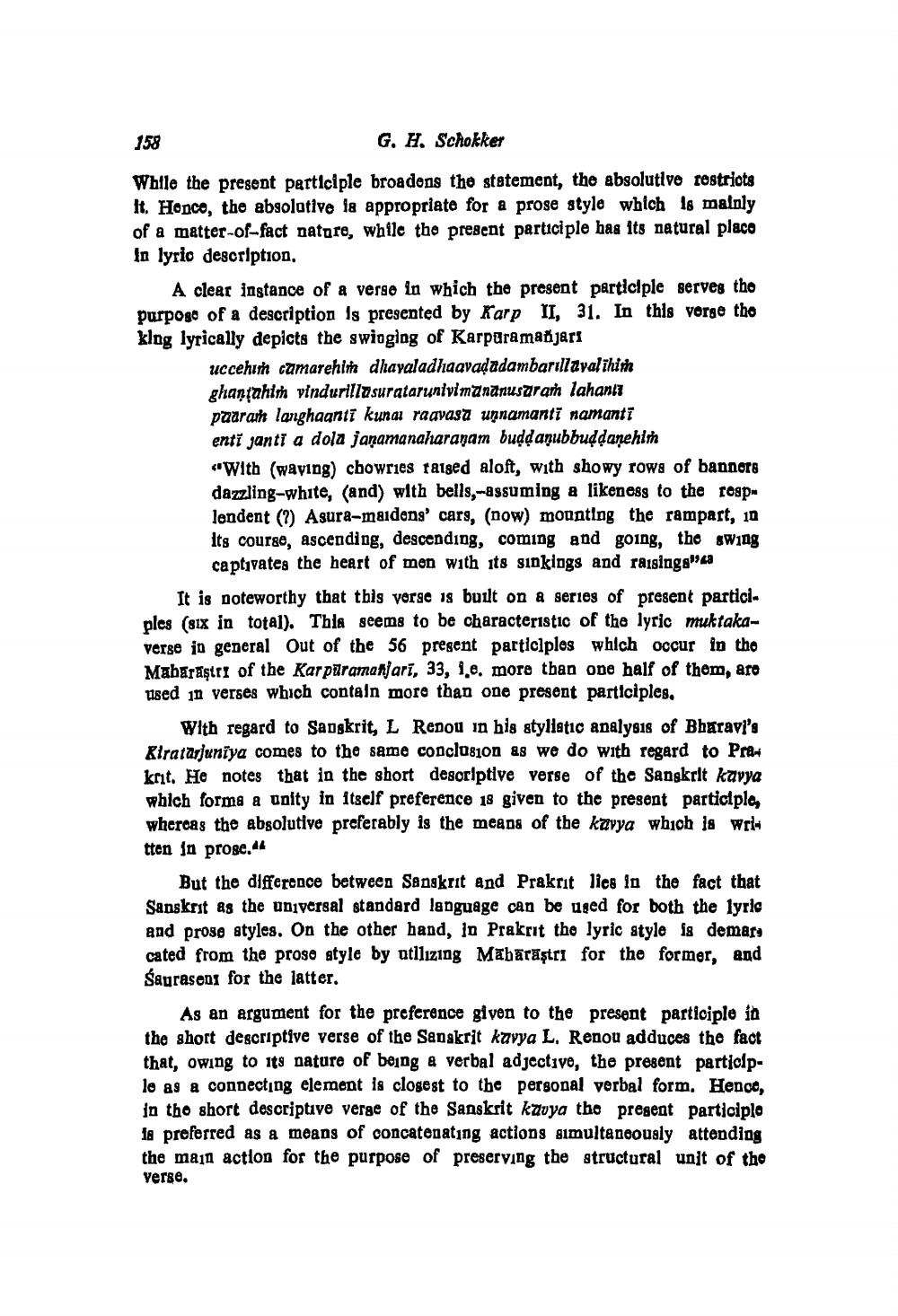________________
158
G, H. Schokker
While the present participle broadens the statement, the absolutive restriots It. Honco, the absolutive la appropriate for a prose style which is mainly of a matter-of-fact nature, while the present participle has its natural place In lyrio description,
A clear instance of a verse in which the present participle serves the purpose of a description is presented by Karp II, 31. In this vorge the king lyrically depicts the swioging of Karpuramadjari
ucceh camarehim dhayaladhaavadadambarıllayalihim ghantahim vindurillusurataruntvimannusaran lahanı paararh langhaanti kunai raavasa unnamanti namanti enti janti a dola janamanaharaṇam budd anubbuddanehim «With (waying) chowries raised aloft, with showy rows of banners dazzling-white, (and) with bells,-assuming a likeness to the togplendent (?) Asura-maidens' cars, (now) mounting the rampart, in its course, ascending, descending, coming and going, the swing
captivates the heart of men with its sinkings and raisingg"La It is noteworthy that this verse is built on a series of present participles (six in total). This seems to be characteristic of the lyric muktakaverge in general Out of the 56 present participles which occur in tho Mabaraştri of the Karpuramanjarī, 33, 1.e. more than one half of them, aro used 11 verses which contain more than one present participles,
With regard to Sangkrit, L Renou in his styllatic analysis of Bharavi's Kiratarjuniya comes to the same conclusion as we do with regard to Prani krit. He notes that in the short descriptive verse of the Sanskrit kavya which forma a unity in itself preference is given to the present participle whereas the absolutive preferably is the means of the kavya which is wrth tten in proge. 41
But the difference between Sanskrit and Prakrit lies in the fact that Sanskrit as the universal standard language can be uged for both the lyric and prose styles. On the other hand, in Prakrit the lyric style is demary cated from the prose style by atllızıng Mabaraştri for the former, and Saurasens for the latter.
As an argument for the preference given to the present participle in the short descriptive verse of the Sanskrit kavya L. Renou adduces the fact that, owing to its nature of being & verbal adjective, the present participle as a connecting element is closest to the personal verbal form. Hence, in the short descriptive verge of the Sanskrit kavya the present participle A preferred as a means of concatenating actions simultaneously attending the main action for the purpose of preserving the structural unit of the verse,




